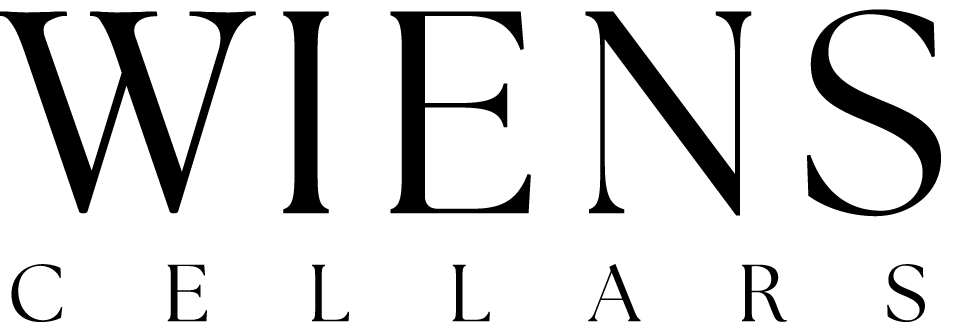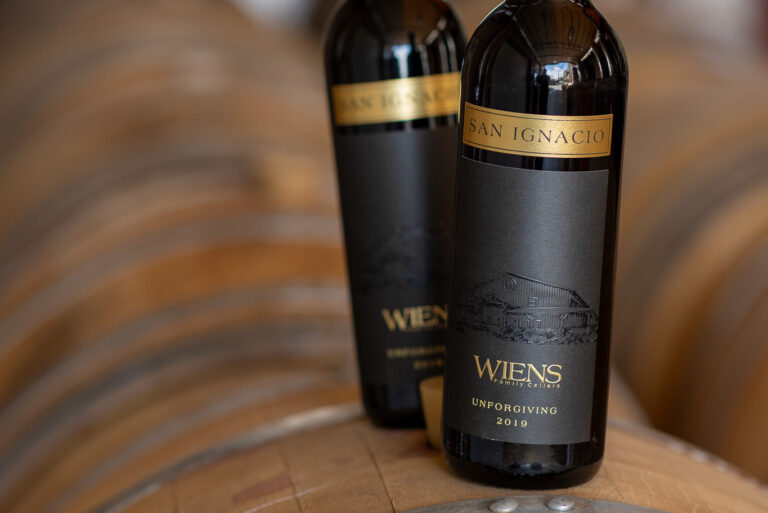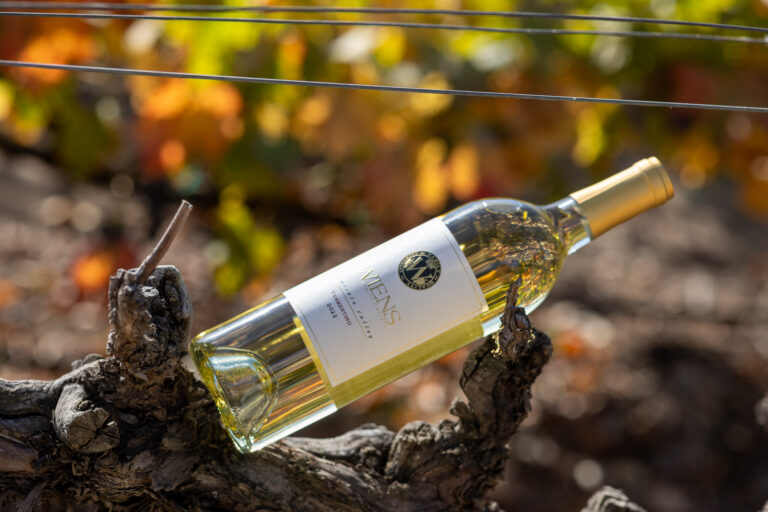The world of wine is an intricate tapestry woven with tradition, innovation, and the profound influence of geography and culture. In exploring the dichotomy between Old World and New World wines, we embark on a journey through time and terroir. These terms extend beyond mere categorization; they encapsulate a philosophy, a history, and a cultural legacy.
Our winemaker, Brian Marquez, explains, “As a winemaker, I find the elegance and tradition of Old World wines fascinating. Each sip is like a journey through centuries of winemaking mastery, where the terroir whispers stories of the land. However, the innovation in New World winemaking is equally enthralling, pushing boundaries and embracing the freedom to explore new expressions.” Let’s unravel the nuances and stories that define Old World and New World wines, celebrating the richness each brings to our glasses.
Defining Old World and New World Wines
- Old World Wines
- Originating from Europe, Old World wines are a testament to centuries-old winemaking traditions. These bottles carry the weight of history, a connection to the land, and a commitment to time-honored practices. They are the embodiment of a deep-rooted cultural narrative that transcends generations.
- New World Wines
- Emerging from regions like the Americas, Australia, and New Zealand, New World wines represent a departure from convention. Here, innovation and experimentation take center stage, unburdened by the weight of centuries. These wines are a celebration of the new, the bold, and the limitless possibilities that modern winemaking affords.
The Historical and Cultural Significance of These Terms
Despite being seemingly technical, the terms “Old World” and “New World” carry profound historical and cultural weight. Historically, Old World regions have been at the epicenter of winemaking for centuries, where the craft evolved alongside civilizations. This longevity births a unique cultural identity in each bottle.
Conversely, the New World represents a departure, a rebirth. The term denotes regions that came into winemaking prominence more recently. Here, the culture of winemaking is dynamic, shaped by a spirit of exploration, innovation, and a willingness to break from tradition.
Understanding Old World and New World wines is more than a matter of geography; it’s an exploration of heritage, philosophy, and the ever-evolving narrative of a liquid art form.
Old World Wine Characteristics
- Key Wine-Producing Countries and Regions
- In the hallowed vineyards of Old World regions, history whispers through the vines. France, with its iconic Bordeaux and Burgundy, epitomizes the essence of Old World winemaking. Italy’s Tuscany, steeped in tradition, brings forth Chianti and Brunello. Spain, with Rioja and Priorat, adds a passionate flourish to the Old World narrative. Each sip transports you to the sun-kissed hills and venerable estates of these time-honored regions.
- Winemaking Traditions and Practices
- Old World winemaking is a craft refined over centuries. In Bordeaux, the art of blending, as seen in Château Margaux, reflects a commitment to tradition. Burgundy’s meticulous vineyard classification, showcased in Domaine de la Romanée-Conti, is a testament to the precision of Old World practices. The use of oak barrels, careful vineyard management, and a reverence for the land define the winemaking ethos.
- Typical Flavor Profiles and Terroir Influence
- The soul of Old World wines lies in the terroir – the marriage of soil, climate, and tradition. Burgundian Pinot Noir, with its earthy undertones, exemplifies the terroir-driven philosophy. The minerality in German Rieslings mirrors the ancient soils of the Mosel. Old World flavor profiles are nuanced, reflecting the very essence of the land from which they emerge.
New World Wine Characteristics
- Major Wine-Producing Countries and Regions
- New World wines, unshackled by tradition, redefine the global wine map. Napa Valley in the USA, a pioneer in quality-driven winemaking, offers opulent Cabernet Sauvignons. Australia’s Barossa Valley, known for its bold Shiraz, stands as a testament to the southern hemisphere’s viticultural prowess. New Zealand, with its Marlborough region, shines in the world of vibrant Sauvignon Blancs.
- Innovations in Winemaking Techniques
- In the New World, innovation is the compass guiding winemaking. In California, the use of technology, as seen in Silicon Valley Bank’s wine program, exemplifies this spirit. Precision viticulture in Australia, showcased by Penfolds, pushes the boundaries. New World winemakers embrace stainless steel, modern irrigation, and cutting-edge fermentation techniques, redefining the possibilities.
- Flavor Profiles and the Role of Climate
- New World wines dance on the palate with a symphony of fruit-forward notes. Californian Zinfandels explode with ripe berries, while New Zealand Sauvignon Blancs burst with tropical fruit. The role of climate takes center stage; whether the cool climates of Oregon’s Pinot Noirs or the sun-soaked valleys of Chile, it profoundly shapes the vibrant flavor profiles of New World wines.
In the glass, the dichotomy is clear – Old World wines whisper tales of centuries past, while New World wines shout the promise of innovation and the boundless future.
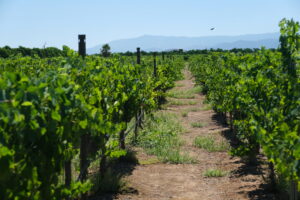
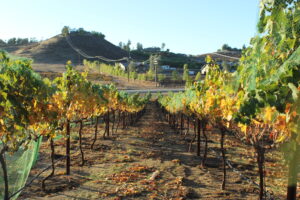
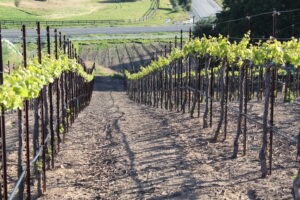
Viticulture: Old World vs. New World
Differences in Vineyard Management
- Old World
- Vineyard management in the Old World reflects centuries of trial, error, and adaptation. In the rolling hills of Bordeaux, meticulous hand labor is often employed for tasks like pruning and harvesting. The emphasis is on preserving tradition, with vineyards often organized into classifications based on historical significance. Sustainable practices, such as organic and biodynamic farming, are integrated, showcasing a holistic approach to vineyard stewardship.
- New World
- In the New World, efficiency and technology play a pivotal role in vineyard management. Mechanical harvesting and precision agriculture are embraced, allowing for large-scale operations. California’s vineyards, influenced by Silicon Valley’s ethos, utilize drones and sensors for data-driven decision-making. The focus is on maximizing yields and ensuring consistency, with a keen eye on sustainable practices and environmental impact.
Varietal Selection and Diversity
- Old World
- Old World vineyards often adhere to a time-tested tradition of planting grape varieties best suited to the local terroir. In Burgundy, the focus is on Pinot Noir and Chardonnay, mirroring the region’s climate and soil. The concept of “cépage,” or blending different grape varieties, is prevalent, adding layers of complexity to wines. Old World vineyards celebrate the distinct character each varietal brings to the blend.
- New World
- Varietal experimentation is a hallmark of New World viticulture. Napa Valley showcases the versatility of Cabernet Sauvignon, while New Zealand’s Marlborough specializes in the expressive Sauvignon Blanc. New World winemakers embrace a diverse range of varietals, often using innovative grafting techniques to adapt vines to different soils and climates. The focus is on expressing the unique characteristics of individual grape varieties.
The vineyards, whether nestled in the hills of Bordeaux or basking in the Californian sun, embody the philosophy of their winemakers. Old World vineyards are like libraries of tradition, each row a chapter in a story written over centuries. In the New World, vineyards are canvases of experimentation, where each grapevine paints a vibrant stroke in the evolving narrative of winemaking.
The Winemaking Process
Contrast in Winemaking Techniques and Technology
- Old World
- In the cellars of Old World wineries, winemaking remains a blend of tradition and modernity. Fermentation often takes place in large, neutral oak barrels or concrete tanks, emphasizing the influence of indigenous yeast. The use of technology is restrained, with manual intervention preferred. Oak aging is a delicate dance, imparting subtle flavors without overwhelming the wine. Time, tradition, and the intuitive knowledge of winemakers guide the process.
- New World
- New World winemaking embraces technological advancements to create precise and consistent wines. Stainless steel tanks equipped with temperature control mechanisms facilitate fermentation, allowing winemakers to exert meticulous control over the process. Small oak barrels, often new and toasted, impart bold flavors quickly, catering to a preference for fruit-forward and approachable wines. Innovation is key, with techniques like micro-oxygenation and reverse osmosis being employed to refine the final product.
The Philosophy Behind Winemaking in Both Worlds
- Old World
- For Old World winemakers, the philosophy revolves around terroir—the idea that the land, climate, and centuries-old practices contribute to a wine’s identity. The focus is on showcasing the essence of the vineyard, and winemakers adhere to regional regulations that define grape varieties, yields, and winemaking techniques. There’s an inherent belief that great wine is made in the vineyard, and the winemaker’s role is to guide rather than manipulate.
- New World
- In the New World, winemaking is seen as an art form that allows for experimentation and expression. Winemakers are often free from stringent regulations, enabling them to push boundaries and craft wines that reflect their individual style. The emphasis is on the grape as a canvas for creativity, with winemakers embracing the freedom to blend across regions, use innovative aging vessels, and apply modern techniques to achieve desired flavors.
As grapes transform into wine, the divergence in techniques and philosophies becomes evident. The Old World’s reverence for tradition and terroir contrasts with the New World’s embrace of innovation and individuality. Each approach, whether rooted in centuries of history or shaped by contemporary ambition, contributes to the rich tapestry of global winemaking.
Labeling and Regulation
Old World Labeling Laws and Appellation Systems
Old World wines, steeped in tradition and regional identity, adhere to stringent labeling laws and appellation systems. These regulations are designed to preserve the authenticity of wines and communicate crucial information to consumers.
- Appellation d’Origine Contrôlée (AOC) in France
- The French AOC system is iconic, categorizing wines by their region of origin. It dictates grape varieties, yields, and winemaking practices. For example, a Bordeaux labeled AOC must adhere to the specific rules governing Bordeaux wines.
- Denominazione di Origine Controllata (DOC) and Denominazione di Origine Controllata e Garantita (DOCG) in Italy
- Italy’s labeling system differentiates between standard and guaranteed denominations. The DOCG signifies the highest quality and stringent regulations, ensuring wines like Barolo and Brunello di Montalcino meet specific standards.
- VDP in Germany
- The Verband Deutscher Prädikatsweingüter (VDP) classifies German wines based on ripeness levels and vineyard sites. The system communicates the quality and style of the wine, providing consumers with valuable information.
New World Labeling Practices and Varietal Emphasis
In the New World, where innovation and individuality thrive, labeling practices prioritize transparency and accessibility, often emphasizing grape varieties over regional origin.
- Varietal Labeling in the United States
- Wines from the U.S. prominently display the grape variety on the label, allowing consumers to easily identify and select wines based on their preferred varietals. This practice is common across regions, fostering a consumer-friendly approach.
- Geographical Indications in Australia
- While Australia has a Geographical Indication (GI) system, it doesn’t carry the same level of restriction as Old World appellations. Winemakers have more flexibility in grape varieties and winemaking techniques, with labels providing information about the grape variety and region.
- Winery and Brand Focus in New Zealand
- New Zealand’s labeling often emphasizes the winery or brand, offering a marketing-driven approach. Consumers are encouraged to explore wines based on the reputation and style of the producer, allowing for greater flexibility in winemaking.
In the world of wine, the label is a story in itself. Old World labels narrate the tale of centuries-old traditions and terroir, while New World labels showcase the diversity of grape varieties and the spirit of innovation. Understanding these labeling and regulatory approaches enhances the appreciation of wines from both worlds.
Consumer Perceptions and Preferences
Market Trends and Consumer Tastes
The ever-evolving landscape of consumer preferences shapes the dynamics of the wine market, with discerning tastes driving trends and influencing the choices of both Old World and New World wines.
- Old World Trends
- Traditional wine-producing regions, with their rich histories, often appeal to consumers seeking a connection to heritage. Wines from regions like Bordeaux or Burgundy continue to be revered for their nuanced flavors and the prestige associated with their centuries-old winemaking traditions.
- New World Preferences
- The New World, characterized by its innovative spirit, caters to a diverse range of consumer tastes. Wines from regions such as California’s Napa Valley or Australia’s Barossa Valley gain popularity for their bold and fruit-forward profiles, appealing to those who enjoy a modern and approachable style.
- Emergence of Hybrid Styles
- Contemporary consumers, driven by curiosity, are increasingly drawn to wines that bridge Old World elegance with New World innovation. Wines experimenting with traditional varietals in new terroirs or employing Old World techniques in modern wineries represent a growing segment.
The Influence of Wine Critics and Ratings
In the age of information, wine critics and ratings wield significant influence, guiding consumers in their wine selections and contributing to the perceived value of a bottle.
- Old World Critique
- Established wine critics often emphasize the subtleties, complexities, and aging potential of Old World wines. High scores from critics like Robert Parker or Jancis Robinson can significantly impact a wine’s reputation and market demand.
- New World Impact
- In the New World, where innovation and individual expression are celebrated, wine critics play a crucial role in highlighting emerging regions and boutique wineries. Positive reviews from critics like James Suckling or Wine Spectator can propel a New World wine into the spotlight.
- Shift to Social Media Influence
- With the rise of social media, influencers and online platforms have become influential in shaping consumer perceptions. The accessibility of user reviews and recommendations contributes to a democratization of wine appreciation, impacting choices across both Old and New World categories.
Understanding the symbiotic relationship between market trends, critic evaluations, and consumer preferences provides valuable insights into the diverse and dynamic world of wine. Whether drawn to the time-honored traditions of the Old World or the bold innovations of the New World, consumers navigate a rich tapestry of options, each bottle telling its unique story.
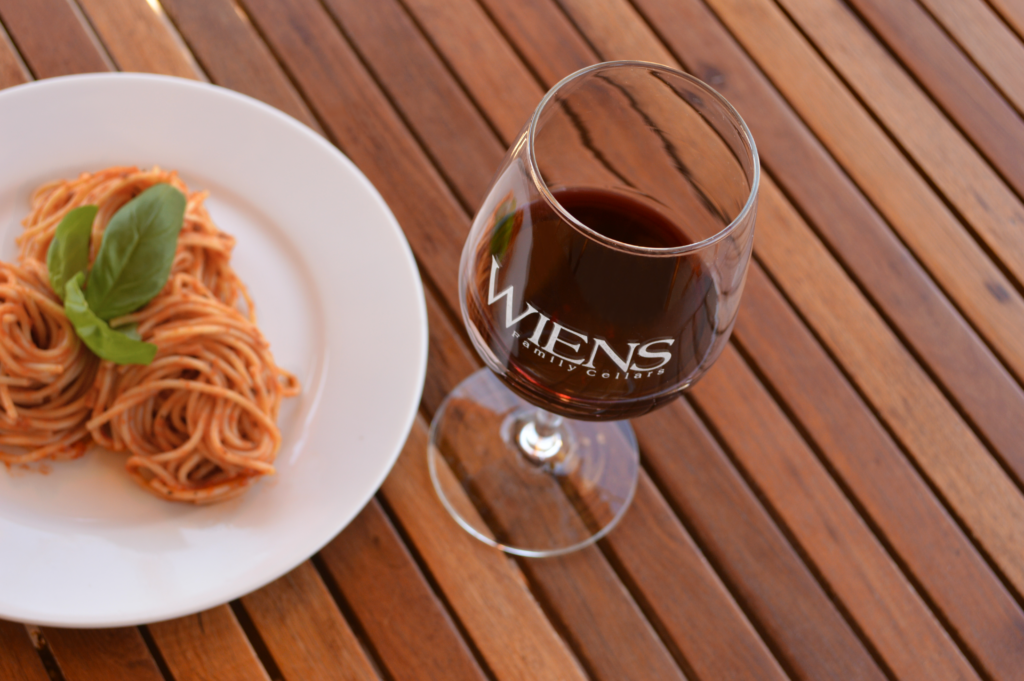
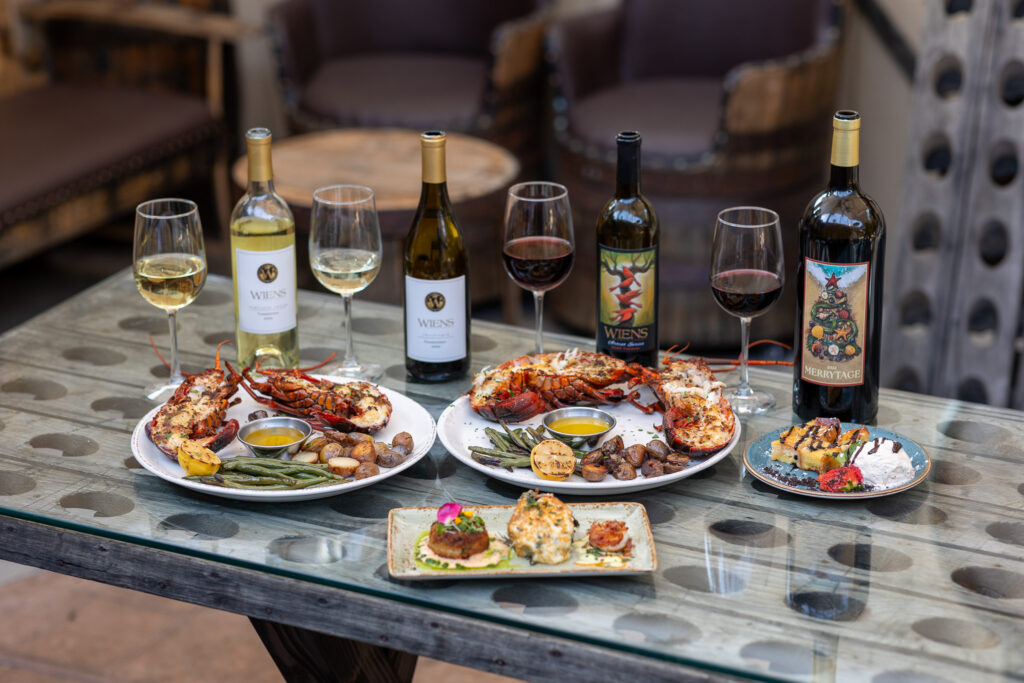
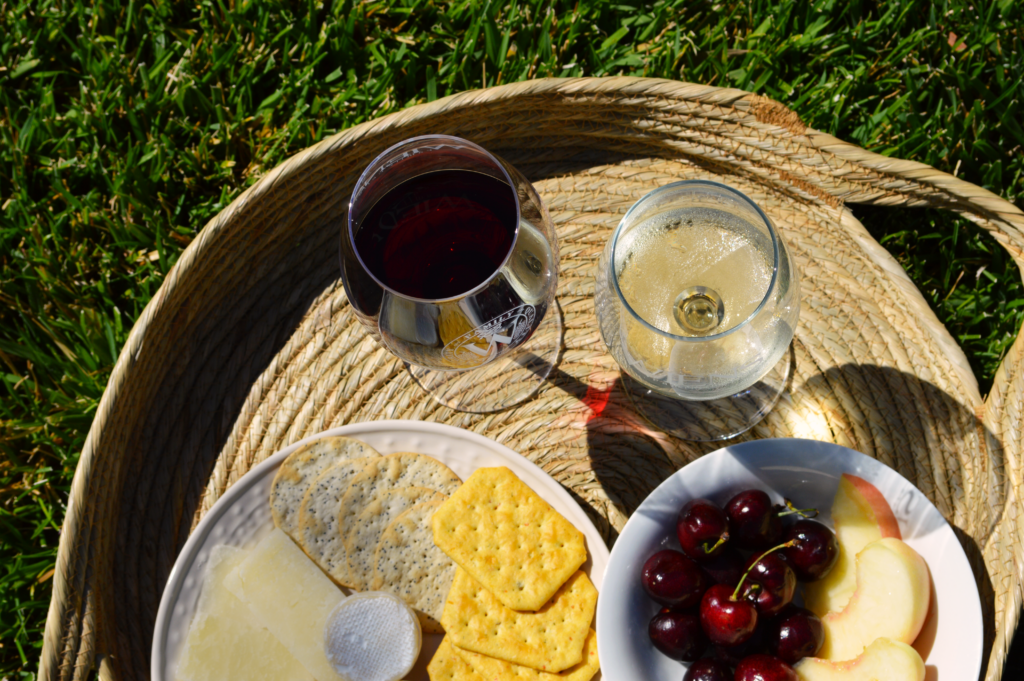
Pairing Old World and New World Wines with Food
Traditional and Modern Pairing Philosophies for Each World of Wine
Old World and New World wines each bring distinct characteristics to the table, influencing traditional and modern philosophies of food pairing.
- Old World Pairing Philosophy
- Tradition and Terroir: Old World wines, deeply rooted in tradition, often emphasize the concept of terroir—the unique expression of a vineyard’s soil and climate. Traditional pairings focus on local cuisines that have evolved alongside these wines, seeking harmony between the earthy nuances of the wine and the flavors of the region.
- New World Pairing Philosophy
- Innovation and Bold Flavors: Embracing a more innovative approach, New World wines showcase ripe fruit flavors and bold profiles. Modern pairings involve experimenting with diverse global cuisines, aiming to amplify the wine’s fruit-forward characteristics and complement them with a wide range of flavors.
Examples of Pairings for Both Styles
Old World Pairings
- Bordeaux and Lamb Cassoulet
- A classic pairing, Bordeaux wines, known for their structured tannins and complex flavors, beautifully complement the rich and savory notes of a lamb cassoulet. The wine’s acidity cuts through the richness of the dish, creating a harmonious balance
- Chianti Classico with Osso Buco
- The high acidity and cherry-driven flavors of Chianti Classico from Tuscany provide a delightful contrast to the richness of Osso Buco. The wine’s herbal notes enhance the herbal components in the dish, creating a traditional Italian pairing.
- Burgundy and Coq au Vin
- Burgundy’s elegant Pinot Noir, with its nuanced aromas and silky texture, is a natural match for Coq au Vin. The wine’s red fruit character complements the savory flavors of the braised chicken, creating a timeless pairing.
New World Pairings
- California Cabernet Sauvignon with Grilled Ribeye
- The bold and robust nature of a California Cabernet Sauvignon stands up to the intense flavors of a grilled ribeye. The wine’s dark fruit and structured tannins enhance the savory notes of the steak.
- New Zealand Sauvignon Blanc with Citrusy Ceviche
- The vibrant acidity and zesty citrus flavors of New Zealand Sauvignon Blanc provide a refreshing contrast to the bright and citrusy notes of a seafood ceviche. The wine’s lively character elevates the freshness of the dish.
- Australian Shiraz and Barbecue Ribs
- The bold, fruit-forward profile of Australian Shiraz complements the smoky and savory flavors of barbecue ribs. The wine’s ripe fruit and hints of spice add depth to the robust barbecue experience.
Pairing Old World and New World wines with food is an art that embraces both tradition and innovation. These examples showcase the versatility of both styles, inviting wine enthusiasts to explore a world of culinary possibilities that enhance the dining experience.
The Future of Old World and New World Wines
The Blending of Old World and New World Philosophies
As the global wine landscape evolves, there is a noticeable convergence of Old World and New World philosophies, creating a dynamic and interconnected future for winemaking.
- Innovative Techniques in Old World Regions
- Old World regions, deeply rooted in tradition, are increasingly incorporating innovative winemaking techniques from the New World. From temperature-controlled fermentations to the use of modern oak barrels, these adaptations enhance consistency and quality while preserving the essence of terroir.
- Embracing Tradition in the New World
- Conversely, New World winemakers are showing a growing appreciation for traditional methods. Some producers are experimenting with extended aging, incorporating indigenous yeasts, and adopting minimalist interventions to capture the complexity and subtlety associated with Old World wines.
Emerging Wine Regions and Future Trends
The wine world is witnessing the emergence of exciting new regions and the rise of trends that redefine the boundaries of traditional winemaking.
- Exploration of Uncharted Territories
- Wine enthusiasts can anticipate the exploration of previously overlooked regions as winemakers seek unique terroirs. Countries like Georgia, Slovenia, and Turkey are gaining attention for their indigenous grape varieties and distinctive winemaking styles, contributing to the diversification of the global wine map.
- Sustainable and Organic Practices
- The future of winemaking is increasingly intertwined with sustainability and organic practices. Both Old World and New World wineries are adopting eco-friendly viticulture and winemaking methods, reflecting a shared commitment to environmental stewardship.
- Technology and Precision Viticulture
- Advancements in technology, including precision viticulture and data analytics, are becoming integral to vineyard management. Winemakers are harnessing these tools to optimize grape growing conditions, leading to higher quality fruit and more precise winemaking processes.
- Cultural Fusion in Wine Styles
- With globalization, winemakers are embracing a cross-cultural approach, fusing Old World elegance with New World exuberance. This blending of styles results in wines that marry the finesse of traditional winemaking with the bold expressions of modern techniques, offering consumers a diverse range of choices.
The future of Old World and New World wines is characterized by a dynamic interplay of traditions, innovations, and the exploration of new frontiers. This evolving landscape promises exciting developments, ensuring that wine enthusiasts will continue to be delighted by a rich tapestry of flavors and styles in the years to come.
Exploration and Appreciation of Both Styles
In the exploration of Old World and New World wines, one discovers not just distinct flavors and aromas but also a rich tapestry of history, culture, and winemaking philosophy. Embracing both styles allows wine enthusiasts to embark on a journey that transcends geographical boundaries, experiencing the heritage and innovation that each brings to the glass. The appreciation of both Old World traditions and New World innovations fosters a holistic understanding of the nuanced artistry behind every bottle.
The Global Wine Community and Shared Passion for Winemaking
The global wine community stands united by a shared passion for winemaking, transcending the dichotomy of Old World and New World distinctions. This shared devotion to the craft creates a collaborative environment where knowledge, techniques, and experiences are exchanged. As we celebrate the diversity in wine styles and the unique narratives woven by each region, it becomes evident that the global wine community is bound together by a love for the vine, a commitment to excellence, and an enduring enthusiasm for the ever-evolving world of wine.
In the nexus of tradition and innovation, heritage and exploration, the conclusion is not a resolution but an invitation—a call to savor the richness of both worlds, celebrate the shared journey of winemaking, and anticipate the unfolding chapters in this captivating story of wine. Our owner, David Steinhafel, also explains, “In the world of wine, we appreciate the timeless artistry of Old World classics and celebrate the daring spirit of New World creations. It’s not about choosing one over the other; it’s about savoring the diversity they bring to our glasses. At our vineyard, we honor tradition while embracing the evolution of winemaking, offering a taste that bridges continents and cultures.” Cheers to the timeless allure and perpetual evolution of the wine universe.
